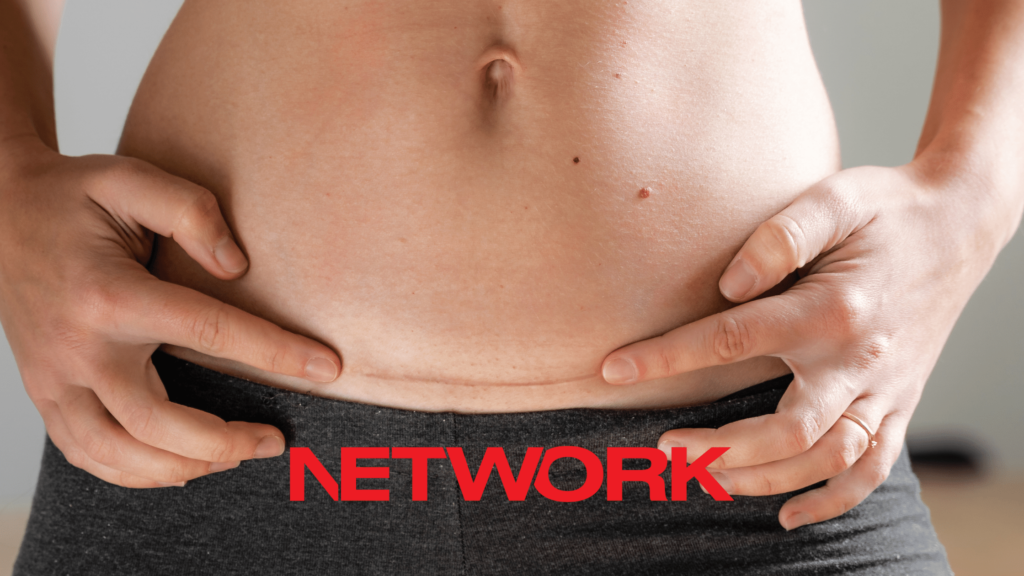The Fitness Zone

Do you train clients that have had a C-Section?
A caesarean section is far from the ‘easy’ childbirth option, and trainers need to be aware of the many recovery and training considerations for this cohort of new mothers, writes trainer and educator Clare Hozack.
The World Health Organisation (WHO) estimates that life-saving caesarean sections should make up 10-15% of all births1, but in the Western world the numbers are closer to 25-30% of births2. This is despite WHO research showing no evidence that this additional proportion of caesareans improves mortality rates.
Risk awareness

Almost 20 years ago, the International Caesarean Awareness Network (ICAN) created Caesarean Awareness Month3 to ensure that patients and their families would understand the full risks of caesareans and other uterine surgeries before undergoing their first surgery. Many, if not most, do not hear terms such as ‘placenta accreta’ (a rare but serious pregnancy complication that may be contributed to by previous c-section-related scarring to the uterus) until they are being diagnosed with it, even though data shows the vast majority of people that have a caesarean will opt to do so again with subsequent pregnancies. This means people are not fully informed on the risks of caesareans before they experience one for the first time.
Without judging individual choices, and a woman’s right to choose, it is important for women to understand that a C-section is major abdominal surgery, and carries all the usual risks of such procedures. A woman also needs to understand that, physically, it is just as hard on her body as a vaginal birth – she is not going to miraculously ‘save’ her pelvic floor by opting for a caesarean.
“It is important for women to understand that a C-section is major abdominal surgery, and carries all the usual risks of such procedures”
There are hundreds of other factors for pelvic dysfunctions, which include being pregnant, overweight, an elite athlete, occupational heavy lifting, chronic constipation, smoking and more. A C-section is also a factor for pelvic dysfunctions, just in a different way to a vaginal birth.
Recovery
You have to recover from a caesarean surgery in the same way you would a bowel resection, appendicostomy or other abdominal surgery. It is definitely not the ‘easy’ option that many women appear to perceive it. The trouble with holding this perception is that some women may then behave post-surgery as if everything were ‘easy’ too – and the body doesn’t like this.
Over the past couple of decades, I have had the uncommon advantage of training and educating hundreds of pregnant and postnatal women, while also working with personal trainers. The patterns we see over this population, and time period, aren’t necessarily things you can study, nor has a study been attempted as far as I can see (if you know of one, please send it to me!) However, I can tell you that if I ask 11 women who have had a C-section whether they find sex after birth to be painful, and whether they have been diagnosed with a hypertonic pelvic floor, 10 of them will say ‘yes’ and ‘yes’. I know this because I have asked them, and continue to do so, with the same responses.
Post C-section, a woman goes straight from a major physical event (pregnancy), to a major abdominal surgery (tissue trauma), to a major physical change in lifestyle (the everyday physical tasks associated with having a new baby), with a major change in mental and emotional load (having to remember and worry about more).
The stress factor

An additional consideration is that the woman may or may not have wanted to have the caesarean, which can complicate things further. In periods of stress and uncertainty like the above, the body will clamp down, or tense up, and develop areas of rigidity to protect itself. In a post-C-section body, the areas this occurs in are most commonly the pelvis and back, which can lead to pain and dysfunctions down the track.
Because there can be years between a C-section being performed and the presentation of a chronic pain condition or injury, the two are often not seen as being linked. It is also important to note that the pain is not always where the problem is. Although the pain may be, for example, in the neck, it could be able to be relieved with abdominal wall stretching. The body is intricately connected!
C-section recovery is big and can affect so many areas of life. Click here for some thoughts I have previously shared on ‘the posture of pain’ and on the challenge of sneezing with an abdominal wound.
Caesareans have saved countless lives, of both mothers and babies, and we are fortunate to have the technology to perform them safely. However, if the decision to undergo this procedure is due to personal choice rather than medical advice, the woman should always make sure she understands what she is entering into, and take appropriate care of her body when returning to activity afterwards.
When training women who have given birth in this way, it is useful to understand the enormity of the procedure, and how the abdominal scar can affect things like posture, continence and pelvic mobility for years – or indeed forever. Knowing that you don’t know enough is the perfect place to start. When you’re training mothers, keep seeking courses and resources that will help you serve them better.
REFERENCES
- 1. https://www.who.int/reproductivehealth/publications/maternal_perinatal_health/cs-statement/en/
- 2. https://www1.health.gov.au/internet/publications/publishing.nsf/Content/pacd-maternityservicesplan-toc~pacd-maternityservicesplan-chapter2
- 3. https://www.ican-online.org/blog/2021/04/cesarean-awareness-month-2021/
Clare Hozack
A former athlete and strength and conditioning coach, Clare applies this experience to her work training and educating pre- and post natal women to help them develop ‘next level’ fitness for parenting. A trainer with IntoYou studio on Sydney’s Northern Beaches, she is also the Australian and NZ Master Trainer for Burrell Education, which delivers a range of women’s health and pregnancy-related courses. You can download Burrell Education’s free Pre-Screening tools for pregnant women here and post natal women here.
Read more articles
Disclaimer: Where Certificate III in Fitness, Cert III/Cert 3, or Fitness Coach is mentioned, it refers to SIS30321 Certificate III in Fitness. Where Certificate IV in Fitness, Cert IV/Cert 4, or Personal Trainer is mentioned, it refers to SIS40221 Certificate IV in Fitness. Where Master Trainer Program™ is mentioned, it refers to Fitness Essentials and SIS40221 Certificate IV in Fitness. Where Master Trainer Plus+ Program™ is mentioned, it refers to SIS30321 Certificate III in Fitness and SIS40221 Certificate IV in Fitness. Where Certificate IV in Massage or Cert IV/Cert 4 is mentioned, it refers to HLT42021 Certificate IV in Massage Therapy. Where Diploma of Remedial Massage is mentioned, it refers to HLT52021 Diploma of Remedial Massage.











